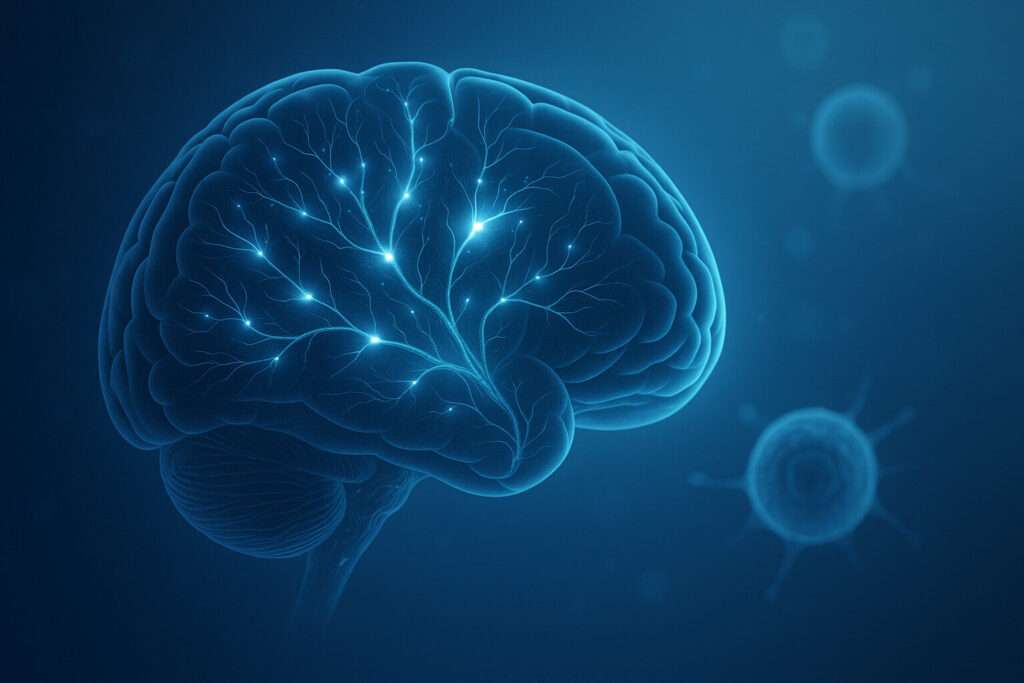
The quick version
- What they did: Gave mice an ischemic stroke, then transplanted human neural stem cells 1–10 days later.
- What happened: New neurons formed; blood vessels and the blood-brain barrier showed repair; mice improved on movement tests.
- What it means: Regenerative therapy might one day extend the recovery window beyond today’s hours-long limits.
- What it doesn’t mean: We cannot offer this to people yet. Mouse success ≠ human approval. Years of safety and efficacy trials are ahead.
Why scientists are excited
- Multiple wins at once. The grafted stem cells didn’t just sit there—they became neurons and triggered other repair programs (angiogenesis, barrier repair, inflammation damping). That multi-pathway effect is rare and valuable in brain injuries.
- A wider treatment window (in mice). Transplants days after stroke still helped, hinting future therapies might aid patients who miss the current clot-busting window.
Why clinicians are cautious
- Species gap. Mouse brains recover differently. Human trials must prove survival, integration, and function of cells—and rule out tumor risk.
- Delivery details matter. Dose, cell type, timing, and surgical targeting all change outcomes. None are standardized yet.
- Regulatory runway. Moving from lab to Phase 1–3 human trials takes time. Expect years, not months.
If you or a family member had a stroke: what helps now
- Don’t wait on hype. Ask your neurologist or PT about enrolling in legit clinical trials; avoid “stem cell clinics” making promises.
- Early, task-specific rehab. The most reliable “neuro-regenerator” we have today is repetition with progression (gait, reach-to-grasp, balance), monitored so you don’t over-fatigue.
- Risk-factor control. Tight BP, glucose, lipids, sleep apnea management = fewer re-strokes and better brain recovery.
- Intensity that fits your next-day function. Aim for challenging, not crushing. If you’re wiped the next day, scale the dose and build back up.
How Movement Solutions Helps After Stroke (Without the Hype)
We’re a full-service, cash-pay PT clinic. No miracle claims—just evidence-based neuro rehab done at a dose you can actually tolerate.
What we do
- Targeted neuro eval: gait, balance, vision/vestibular, coordination, strength, sensation, fatigue profile.
- Task-specific training: walking, stairs, reach-to-grasp, transfers—reps that translate to daily life.
- Upper-limb recovery: shoulder/scapula control, constraint-induced practice (as appropriate), coordination drills, grip retraining, home tools you’ll actually use.
- Balance & fall-prevention: reactive balance work, safe turning, dual-task (think + move), home safety tweaks.
- Dose that respects next-day function: we set limits (RPE and next-day check) so you improve without crashing.
- Caregiver coaching: simple cues and set-ups so progress continues at home.
- Care coordination: we can share concise notes with your neurologist/PCP and help screen legit clinical trials (not pay-to-play “stem-cell” clinics).
- Ready to move?
- Book a 15-minute inquiry call
- Prefer SMS? Text (864) 558-7346 with “STROKE PLAN”.
- (We don’t bill Medicare; payment plans and packages available.)
Source & further reading
- ScienceDaily: Scientists reverse stroke damage with stem cells (University of Zurich; Sept 16, 2025). ScienceDaily
- Futurity (Univ. of Zurich): Stem cells reverse stroke damage in mice—plain-English summary. Futurity
- News-Medical: overview and clinical context of the Nature Communications study. News-Medical

